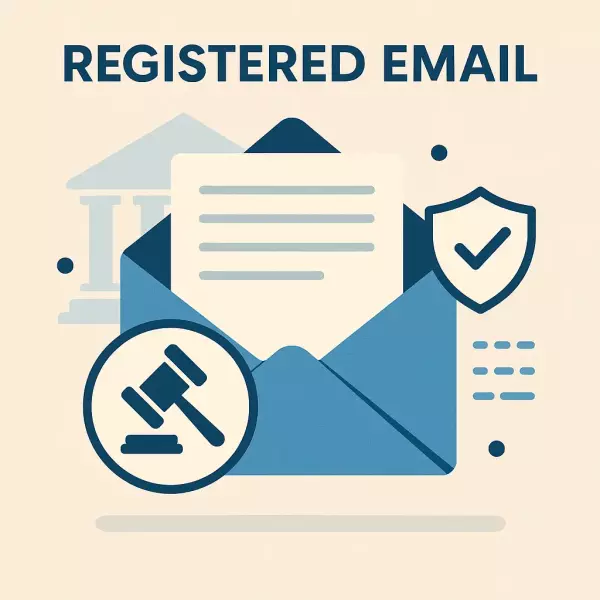
Table of contents
Registered email is an email with full legal validity, capable of proving who sent it, to whom, when, and with what content. It is the digital alternative to the burofax, but faster, more affordable, and with the same probative force.
For it to have legal value, a trusted service provider —such as eEvidence— acts as an independent witness to the sending, recording the entire operation and generating a digitally signed document with a qualified timestamp, the eEvid, which serves as reliable evidence in court.
In this article we explain in practical terms what registered email is, how it works, its advantages, and its common uses.
What is registered email?
Registered email falls under the category of electronic registered delivery services, as defined and regulated by Regulation (EU) 910/2014 (eIDAS Regulation). Unlike a regular email, it provides:
- Proof of origin (verifiable sender).
- Proof of content (full message and attachments).
- Proof of transmission and delivery (date, time, and delivery status).
In practice, it is a digital burofax: a trusted communication, valid as legal proof in any judicial or administrative procedure.
How does registered email work?
The process is simple:
- The sender writes an email as usual, but sends it through the registered email service.
- The recipient receives the message in their normal inbox, without doing anything special.
- The trusted provider (eEvidence) certifies the process by:
- Recording the exact date and time of sending.
- Preserving the full content of the message and its attachments.
- Verifying the recipients.
- Generating a digitally signed PDF document (the eEvid) that contains all technical evidence.
This document can be presented as conclusive proof in the event of a legal dispute.
Advantages of registered email
- Legal validity: equivalent to the burofax, fully admissible in court.
- Cost savings: much more affordable than a burofax or registered letter.
- Speed: instant sending from computer or mobile, no travel required.
- Integrity and authenticity: content, sender, and date cannot be manipulated.
- Traceability: possibility of knowing whether the message was received and processed.
- Digital convenience: all evidence securely archived online.
What is registered email used for?
Registered email is applied in many scenarios:
- Important notifications: warnings, claims, service cancellations.
- Contracts and business relationships: formalizations, renewals, or terminations.
- Corporate communications: with clients, suppliers, or employees.
- Public administration: procedures with deadlines and formal requirements.
- Legal proceedings: proving pre-litigation communication required by Law 1/2025 (ADR).
Registered email vs burofax: a practical comparison
| Feature | Registered email | Burofax |
|---|---|---|
| Legal validity | Yes, equivalent | Yes |
| Cost | Low | High |
| Type of content | Any digital format | Printed material |
| Delivery time | Immediate | 1–2 days |
| Accessibility | ERP/CRM/PC/mobile | Post office |
| Proof of evidence | PDF with electronic timestamp | Physical paper |
FAQs
Does registered email guarantee that the recipient has read the message?
No. Just like a burofax, what is proven is that the message was made available to the recipient on their mail server. The law requires proof of sending and delivery, not proof of reading.
Do I need a qualified service for it to have legal validity?
No. The eIDAS Regulation (art. 43.1) states that non-qualified services also have legal effect and are admissible as evidence in court.
What’s the difference between registered email and a regular email?
A regular email offers no technical or legal guarantees: it can be disputed whether it was sent, what was sent, or when. Registered email provides objective and tamper-proof evidence.
What is eEvidence’s eEvid?
It is the electronic receipt generated for each sending: a digitally signed PDF with a qualified timestamp, recording the origin, content, and delivery of the email.
Conclusion
Registered email is the simplest, most affordable, and most secure way to send communications with full legal validity. It replaces the burofax in the digital environment, provides conclusive proof of origin, content, and delivery, and is recognized under the eIDAS Regulation and Spanish case law.
In short, if you need to notify, claim, or prove an important communication, eEvidence registered email is the most effective solution to do it with legal guarantees and no hassle.
Ready to get started?
Contact us to share your business project or register now to start trying our services today
